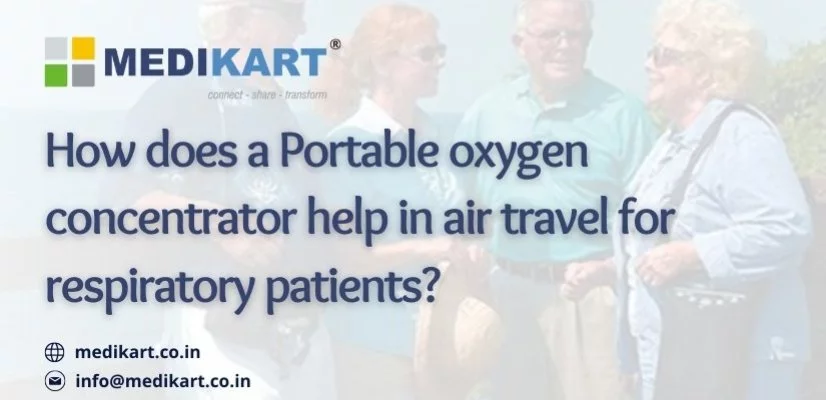A portable oxygen concentrator (POC) is a device that delivers oxygen therapy to patients who need higher oxygen concentrations than ambient air. It’s similar to a home oxygen concentrator (OC), but it’s smaller and easier to transport. Many of them are now FAA-approved to use in aeroplanes and are small enough to carry. With the invention of portable oxygen concentrators, travelling with oxygen has become much easier. A battery pack powers these devices, and you can recharge them by plugging them into a wall outlet or a car’s cigarette lighter.
Oxygen needs at higher altitudes
While travelling to or living at higher altitudes, certain people may become hypoxemic. A simple pulse oximeter reading taken at rest and during activity can assess whether you require oxygen at high altitudes. Some pulmonary function labs can perform an altitude simulation test to measure your oxygen saturation at altitude. This test is inhaling a 16 per cent oxygen mixture that is similar to the quantity of oxygen in the air at 8,000 feet, followed by a pulse oximeter reading. A cabin pressure altitude of no more than 8,000 feet must be provided by commercial flights. If you have a pulmonary condition, your pulmonologist can advise you on whether or not flying is safe for you.
Aeroplanes only allow the portable oxygen concentrator (POC) as the oxygen device permitted on board. If you require oxygen during your travel, you must bring a portable oxygen concentrator and notify your airline in advance. To confirm the need for the POC on the plane, they may request a doctor’s letter. If you don’t have a POC, you can rent one for travel from your oxygen source or from websites like Medikart.
Some tips while flying with a POC
- Make advance arrangements with the airline to learn which POCs they permit. On their websites, several airlines provide a list of approved manufacturers and brands.
- Check-in should be given plenty of time.
- Several spare battery packs should be carried. Battery duration must cover 150 per cent of the flying time, according to FAA standards.
- Along with your POC, rental POCs and battery packs are available.
- Carry an extra three-way plug with you in case you need to recharge your POC at the airport. During layovers, people frequently need to recharge their electronic devices, and this will ensure that you will be able to do so.
- The carry-on count does not apply to POCs.
- Carry a signed prescription or note from your doctor stating your need for oxygen.
- When it comes to storage, the most important thing to remember is that your equipment should allow other passengers to walk around the cabin freely without tripping and falling. The optimal location for your concentrator is beneath the seat in front of you, so you can see and hear any potential alerts. Ensure that you properly tuck the tubing of your lengthy cannula beneath the chair to prevent anyone from tripping over it.
Whether you’re travelling for pleasure or business, it’s critical to make sure you have everything you need for a safe flight with your portable oxygen concentrator. Following these basic recommendations will ensure a stress-free journey with minimum delays.
I hope this article was informative and helps you in your oxygen therapy journey!
Disclaimer
The information provided is for general knowledge only. Consult your doctor for personalized advice and treatment. Medikart HealthCare is not liable for any actions taken based on this info.

